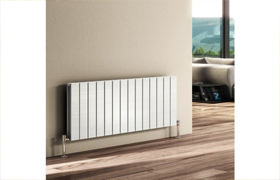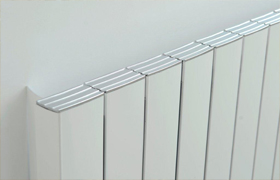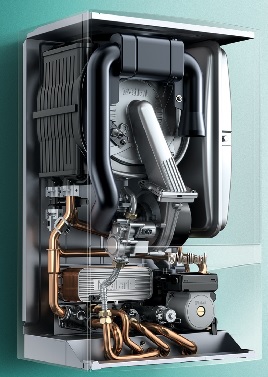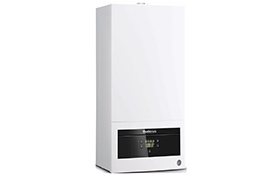Radiator
The radiator is the most commonly used as a space heater in
central heating systems. In these devices, approximately 70% to 80% of the total
heat transfer is by convection (30% to 20%) by radiance . It is possible to
examine the radiators in four groups as casting, steel, aluminum and panel.

Casting radiators are manufactured in slices and grouped according to the desired capacity. From the practical point of view, it is recommended to group up to 30 slices. In compulsory cases, groups with more slice groups need to be on different sides of the group. Due to the corrosion resistance of cast iron, they are long lasting. In general, cast iron radiators can be used in hot water systems up to 4 bar pressure and in steam systems up to 2 bar pressure. Special manufacturing is required for higher pressures. They have different constructions for use in different volumes. Each casting radiator slice is 60 mm thick and is connected to each other from the bottom and top.

This type of radiators are made of hair with Fe-37 which is at least 1,25 mm thick and free from corrosion. The two side surface plates, which are provided in prestigious form and which are not folded, cracked, tufal and dents on their surfaces, are combined with tailstock or similar welding process to form a slice. The slices obtained can be grouped together by screwed steel or face surfaces. The maximum operating pressure in steel radiators used in hot water systems is 4 bar. Steel radiators are lighter and cheaper than cast radiators. Leaks can be repaired by welding. The most important objectionable, not corrosion resistant.

This type of radiator consists mainly of flat or wavy boards. These are made of a sheet with a thickness of at least 1,25 mm thick and of general construction steel Fe-37. The front and rear face plates are combined with spot or similar welding to form the radiator. In general, the front faces are flat and the rear faces can be flat or planar. On the front surfaces, the heat transfer is mainly radiated, while the heat transfer on the rear surfaces is carried out by convection. The wings must be fixed so that they do not form a contact resistance to the surface.

Aluminum radiators can be manufactured in two ways as casting and extrusion. Castings should be at least 1.5 mm thick; extruded ones should be manufactured from forged aluminum alloy and wall thickness at least 1.1 mm. When the slices are grouped, the copper-based material and the aluminum surfaces should not come into direct contact.

 Türkçe
Türkçe English
English русский
русский




